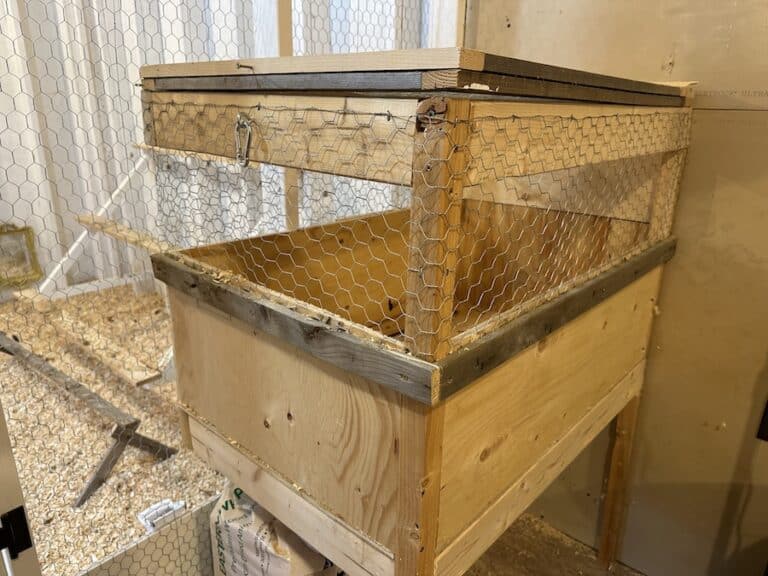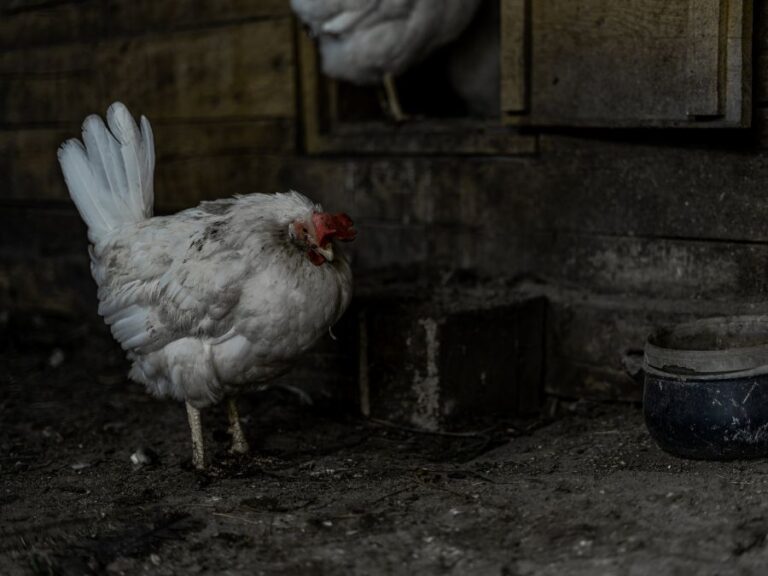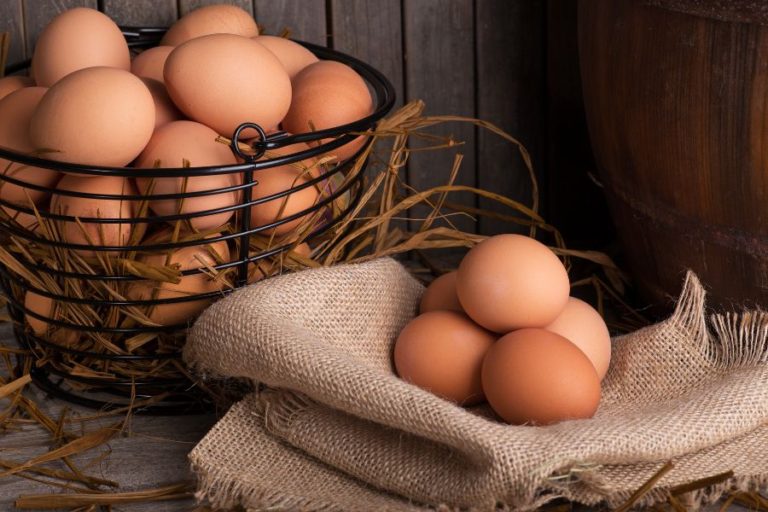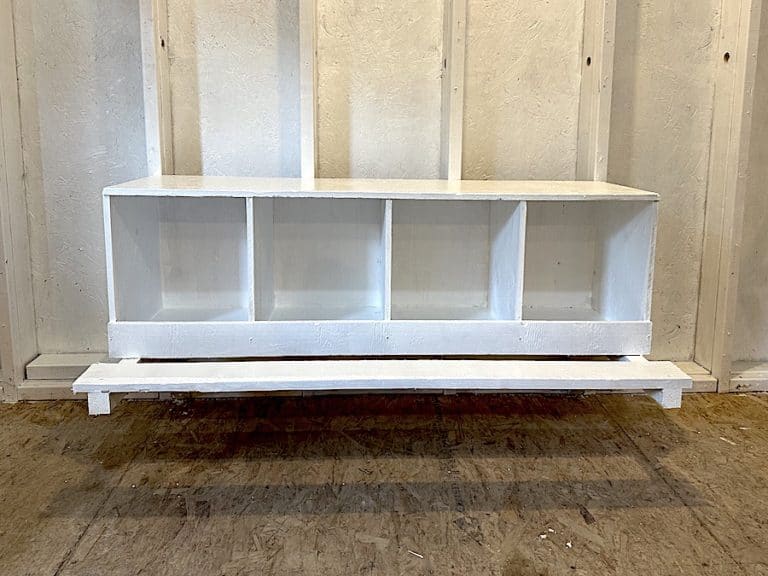Where Is The Best Place To Keep Baby Chicks?
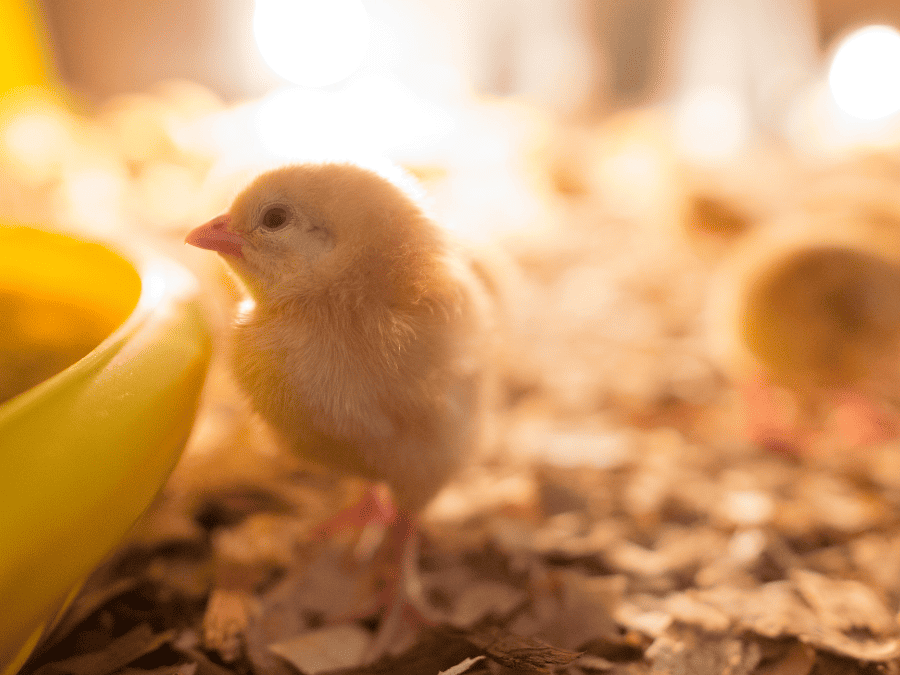
Watching baby chicks grow into beautiful hens can be an exciting experience. Knowing the best place to keep your chicks is incredibly important, as the environment needs to be safe and comfortable enough for them to grow. Whether you choose to keep your chicks inside your home, a sunroom, barn or outbuilding, they must be in a brooder. This will be their temporary home until they are ready for their coop and can be placed inside practically any space as long as it is draft-free, warm and protected from predators.
In this article, we will take a closer look at the best place to keep your baby chicks, what they need inside their brooder, how long to keep them in the brooder and if chicks still require heat lamps when kept indoors.
Disclaimer: This article includes affiliate links. If you click one of them, we may receive a small percentage of the sale at no extra cost to you. Thank you for your support!
Where Is The Best Place To Keep Baby Chicks?
The best place to keep your baby chicks is in a brooder. Where you place that brooder is entirely up to you and your available space. Brooders can be kept in sunrooms, ventilated outbuildings such as barns or sheds, garages or, yes, even in your home! The main thing to remember is that the area be draft-free, warm and safe from potential intruders that could threaten your chicks (e.g., pets, snakes, raccoons). Along with that, every brooder must have a heat source, a brooder guard (temporary walls around the chicks to keep them within the space and eliminate drafts), bedding, food and water.
What Do Baby Chicks Need Inside Their Brooder?
A few things are needed to ensure your chicks grow into healthy, happy hens. Here is a list of items you need before bringing your chicks home.
- Brooder
- Bedding
- Waterer and feeder containers
- Feed
- Heat Lamp/Heat source
Brooder
The first thing you need is a brooder space. The brooder should be at least 12 inches tall for the first week. As they grow, you will want to move them to a larger space with a wall 24 inches high to prevent them from jumping out. We encourage you to use a lid or place and tape deer fencing on top to help keep other animals out and the chicks in.
There are options for pre-fab brooder boxes, such as this chicken brooder start kit. However, they do not have a top or bottom. Therefore, you will need to lay down a tarp or puppy pads before adding the bedding and use a breathable material as the top. An easier and more affordable option that many people like to use is a plastic tote. Chances are you already have one in your home, and they are easy to convert into a temporary brooder.
We personally used a plastic tote for the first few days, then set up and moved them to an extra large dog crate in our sunroom. Since a crate has large openings compared to a fully closed-in tote, we used cardboard on the bottom and along the sides to ensure the chicks could not slip between the openings and no drafts could get in. Plus, it makes cleaning the brooder much easier, and the chicks love having extra space to run around. Below is a photo of our DIY brooder setup.
Eventually, we upgraded our setup and built a chicken brooder/chicken hospital. Click here to learn how to make your own!

Bedding
When it comes to bedding, there are numerous options on the market that you could use in the brooder, but there are also a few you should avoid. The ideal bedding is absorbent and untreated. Wet bedding can allow bacteria to grow, while treated bedding can contain dyes and fragrances that could be toxic to your chicks.
Here are a few safe bedding options for brooders.
- Pine shavings
- Hemp bedding
- Straw
Shavings are a popular choice, and in fact, untreated pine shavings are what we use in our brooder. When getting shavings, always ensure they are pine and not cedar shavings. Cedar is toxic to chicks and chickens due to the effects of its overpowering scent on their respiratory systems.
Waterer and feeder containers
Waterers and feeders are inexpensive, easy to use and must-haves when it comes to a brooder.
There are two types of waterers: a poultry nipple and a gravity poultry jar. The kind that you choose will depend on your needs and preferences. A poultry nipple (link to check the price on Amazon) is arguably the better option as it provides consistent, clean water for the chicks, is less likely to freeze, and you won’t have to deal with bedding being flung into it.
A gravity poultry jar works by gravity, slowly releasing water as the chicks drink. However, they can get dirty quickly as chicks tend to fling their bedding around the brooder. If you don’t mind changing it a few times a day, the gravity waterers are great options. They can be found at any local farm supply store and are commonly sold in sets with a chick feeder. You can even hang the waterer or place it on a block to reduce the amount of bedding and debris from getting into the waterer.
As for the feeders, you can get chick feeders that are either long-shaped or gravity-oval-shaped. Both options have circular openings for chicks to eat from without getting their food everything. We personally use a gravity feeder as it can hold more food, so our chicks have a constant flow of food.
Feed
Regarding what to feed your baby chicks, it is important to always start them on Chick Starter Feed. This contains protein, calcium, prebiotics, probiotics and amino acids, which are all needed for your chicks to grow strong and healthy. When it comes to your growing chicks, there are four stages of feed.
Stage One: From day one until six weeks old, chicks should be eating Chick Feed Starter.
Stage Two: Feed your chicks Confinement Grower Feed from six to twelve weeks old.
Stage Three: From twelve weeks until your hens begin laying (around 4-6 months), feed them Pullet Grower Feed.
Stage Four: Adult hens should be fed layer feed. You can also feed your hens table scraps and vegetables. A few favourites are lettuce, pumpkins, carrots, squash and cucumbers.
Heat Lamp/Heat source
A heat source is one of the most important items a brooder needs. There are two main heat source options: a heat lamp and a heat plate. Both will help keep chicks warm as they grow their feathers, but depending on your bedding and brooder type, one may be better suited than the other.
The first option is a heating plate. These go within the brooder and have adjustable legs to raise or lower the plate depending on the age and size of the chicks. When the chicks are cold, they will huddle underneath the plate to warm up and then move away from the plate to cool down. While heating plates are great sources of heat, you may need more than one if you have multiple chicks to make sure there is enough heat for all of them.
The other option is a heat lamp. This tends to be the more popular choice of the two as it’s affordable, covers a larger area, and you can easily find them at any pet or hardware store. This is best used with newspaper or untreated pine shaving bedding and should be avoided if you are using sand. The reason is that sand combined with feces, moisture, and heat from a heat lamp can be a breeding ground for pathogens and bacteria. When using a heat lamp, it is important to make sure they are securely placed and will not fall into the brooder. Most heat lamps will have a metal safety cage and a recommended wattage capacity.
In our brooder, we use a 300W heat lamp with a 250W red incandescent light bulb. The heat lamp is situated above our brooder (dog crate), and we can lower or raise the height of the lamp depending on how warm it is to control the temperature. Chicks are pretty good at letting you know if it’s too hot or cold, as they will either all huddle together under the heat lamp when it’s too cold or stay far away from the heat lamp if they are too warm.
Do Chicks Need A Heat Lamp Inside A House?
Chicks cannot regulate their body temperature until their feathers are fully grown, which is around six weeks old. Until then, a heat lamp is needed even if you keep it inside your home to ensure the brooder is at the right temperature. When chicks are first born, the brooder needs to be between 90 to 95°F (32 to 35°C) to keep them warm. Each week, you should reduce the heat by 5°F until they are around six weeks old.
To keep track of the temperature within the brooder, we recommend putting in a thermometer to ensure the temperature is just right. Your chicks will go back and forth between being underneath the heat lamp to warm up and moving away to cool off.
For more information on heat lamps and to find out the recommended brooder temperatures, check out our article “Do Baby Chicks Always Need A Heat Lamp?”
How Long Do You Keep Baby Chicks In A Brooder?
Baby chicks should stay in the brooder until they are six weeks old or when all their feathers have grown in. By this age, they will be able to control their own body temperature and can be moved to the coop. However, if not all their feathers have come in, keep them indoors a little longer.
When chicks reach four weeks old, you can begin to introduce them to your backyard and the outside world as long as the temperature is warm enough. At this point, they should already have some feathers and can withstand temperatures around 70 to 75°F (21 to 23°C).

